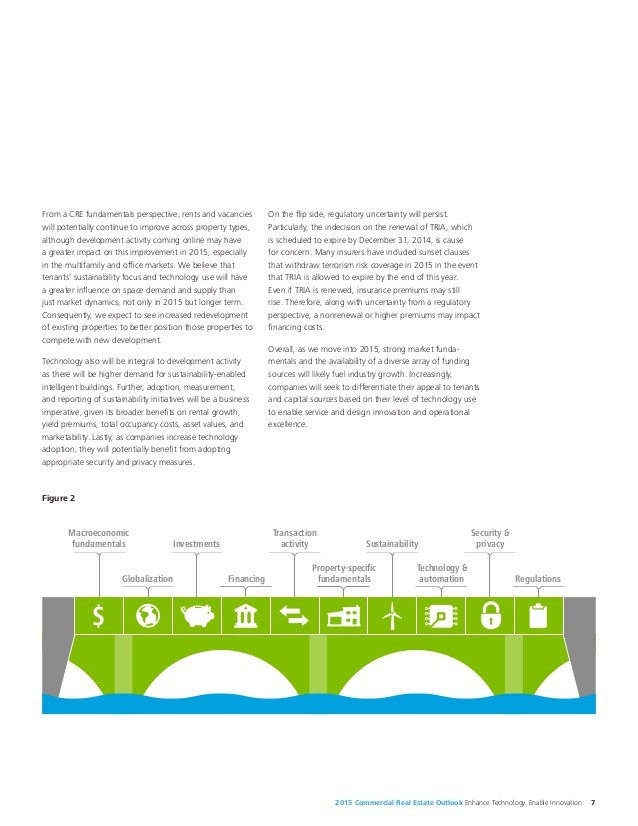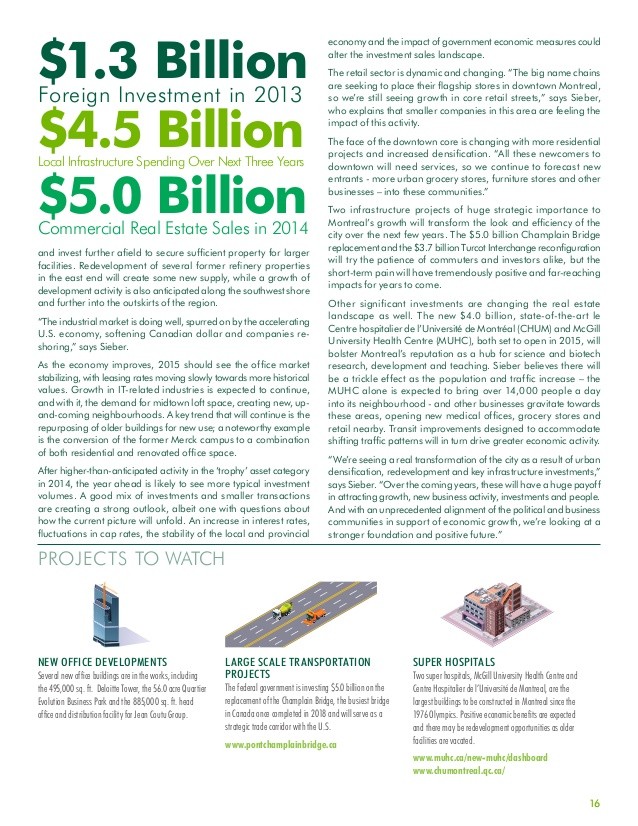Outlook and trends for US real estate development and investment in 2015 PwC
Post on: 24 Июль, 2015 No Comment

Download this issue
View reports for other regions
What are the best bets for investment and development in 2015?
Our forecast gives a heads-up on where to invest, which sectors and markets offer the best prospects, and trends in the capital markets that will affect real estate.
Now in its 36 th year, Emerging Trends in Real Estate® is one of the oldest, most highly regarded annual industry outlook for the real estate and land use industry. It includes interviews and survey responses from hundreds of leading real estate experts, including investors, developers, property company representatives, lenders, brokers and consultants.
1. The 18-hour city comes of age
The urbanization of America has given life to cities that had been historically nine-to-five. According to interviewees, no longer is it accepted that only the great coastal cities can be alive around the clock and on weekends. Downtown transformations have combined the key ingredients of housing, retail, dining, and walk-to-work offices to generate urban cores, spurring investment and development and raising the quality of life for a roster of cities. Buyers have more markets to consider now that the 18-hour centers are putting the elements in place to ratchet up their investment capital flows.
2. The changing age game
The millennials are an even larger cohort than their parents — the baby-boom generation. While the tendency of millennials to postpone homeownership and rent longer will affect the apartment sector over the next several years, many survey interviewees noted that investors should consider how the housing preferences of millennials could change in the 2020s. Looking beyond the millennials, the report anticipates further industry changes resulting from the emergence of the smaller Generation Z. Planning for a nation with lesser household formation, fewer new consumers, and a meager number of workforce entrants is the challenge ahead for a real estate industry with its eye on the 2020s. The report also notes that baby boomers — as workers and retirees — will continue to have a significant impact on real estate development and investment for at least two more decades.
3. Labor markets are trending toward a tipping point
The report states that forward-looking businesses are waking up to a realization that while we were worried about the jobless recovery, longer-term labor market trends were moving in exactly the opposite direction. Retirements will accelerate while the peak of millennial labor force entrants has already passed. Within a few years, the talk will be about labor shortages, not surpluses. The notion that jobs are chasing people will morph into a primary rule of the labor market. Survey respondents place job growth at the top of the list of most important issues for real estate, closely followed by the related concerns of wage and income growth.
4. Real estate’s love / hate relationship with
technology intensifies
No form of real estate is exempt from the exponential expansion of technology. Interviewees see technological disruption as providing new business tools and environments, opening new business paths, and cycling forward as a source of user demand in an era when more traditional industries may be sluggish. Technology is pushing change in space use, locations, and demand levels at an accelerated pace. It is now the norm to anticipate, strategize, and respond to new technologies before they are mainstream. Overall, the fear factor about technological disruption is easing, according to surveyed respondents. E-commerce and crowdfunding, for example, are being viewed as an adaptation challenge, as retailers become omnichannel distributors and e-tailers begin to open brick-and-mortar stores.
5. Event risk is here to stay
There is nothing new in seeing investors along the continuum from core to opportunistic, but the trend will be that such distinctions are heightened over time, and 2015 looks to be a year when this will be especially evident, interviewees note. The reason is that the concern about event risk is troubling the minds of more and more interviewees (geopolitical risks, global unrest, and natural disasters). This is why international investors are considered to be the best prospect for increasing investment volume in 2015, according to the survey.
6. A Darwinian market keeps the squeeze on
companies

Competition is unrelenting, and the need to have a clear brand identity is important as firms seek to navigate in the swift stream of capital. The recent spin-off activities in the retail, office, and hospitality real estate investment trust (REIT) sectors sound a theme that will echo as a trend in 2015. The drive for efficiency and effectiveness in both service delivery and cost will filter from investor expectations down to the service providers, the report states.
7. A new 900-pound gorilla swings into view
Emerging Trends 2014 alerted readers to the establishment of the Defined Contribution Real Estate Council to help plan sponsors and their participants achieve better investment outcomes through the use of institutional quality real estate. With a combined $12.6 trillion in capital, individual retirement account (IRA) and defined contribution (DC) funds will be identifying and taking advantage of the benefits of having high-quality commercial property in a mixed-asset portfolio.
8. Infrastructure: time for the United States to get
serious?
For all our vaunted technological innovations, the foundation of our commerce is eroding around us. It’s not just bridges and roads — since 2009, spending on educational buildings and health care facilities (by both public and private sectors) is down by one-third in real-dollar terms.
9. Housing steps off the roller coaster
Housing seems to be putting the excesses of the bubble and the ensuing collapse behind it. The trend in residential real estate, according to interviewees, looks to be returning to the classic principles of supply and demand. As this major segment of the economy returns to textbook fundamentals, confidence in the residential sector should continue to rise.














